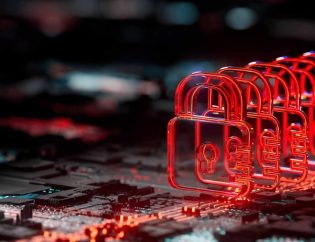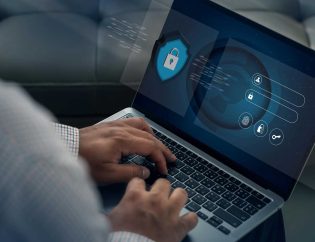
Table of Contents
Introduction
Understanding Digital Piracy
Best Anti-Piracy Measures for Content Protection
Anti-Piracy Measures in Software
Legal Frameworks and Enforcement
The Role of Technology in Anti-Piracy Measures
Additional Strategies for Digital Content Protection
Customer Testimonial
Conclusion
FAQs
References
Introduction
The growth of digital media has led to more piracy, making anti-piracy measures very important. Unauthorized sharing of content harms creators and businesses, leading to financial losses. Strong security measures help protect intellectual property and ensure fair earnings. Without protection, piracy affects businesses, artists and consumers. Taking preventive steps helps stop illegal access and distribution of digital content.
Understanding Digital Piracy
Digital piracy happens when people copy, share or use digital content without permission. This includes movies, music, software, eBooks and more. As the internet and file-sharing platforms become more advanced, piracy has become a serious issue. It causes big financial losses for businesses, artists and creators. Many people do not realize that downloading or sharing content illegally can harm the industry by reducing profits and limiting future creativity.
Common Types of Digital Piracy
Piracy happens in many ways. Some of the most common types include:
1. Streaming Piracy
Watching or sharing copyrighted movies and TV shows on illegal websites without paying. This is one of the most popular types of piracy today.
2. File-Sharing Piracy
Using peer-to-peer (P2P) networks or torrents to share movies, music and software without permission.
3. Software Piracy
Copying, selling, or using paid software without a license. Some people download cracked software, which can also contain viruses and security risks.
4. E-Book and Audiobook Piracy
Downloading and sharing digital books or audiobooks without buying them legally. This hurts authors and publishers who depend on sales.
5. Music Piracy
Illegally downloading, streaming, or sharing music without the artist’s permission. This reduces income for musicians and record labels.
Piracy doesn’t just hurt businesses and creators it can also be risky for users. Many illegal websites contain viruses, malware and phishing scams that can steal personal data.This is why it’s important to follow anti-piracy measures to protect digital content and support fair use.
Best Anti-Piracy Measures for Content Protection
Piracy is a big problem for content creators and businesses. It causes money loss and makes it hard to protect digital work. To stop piracy, companies should use smart technology and legal actions.
Here are some effective ways to protect digital content:
1. Digital Rights Management (DRM)
DRM is a security system that controls who can use digital content. It stops copying, sharing and printing without permission. DRM is used in movies, music and software to prevent piracy.
2. Watermarking
Watermarking adds hidden or visible marks to videos, images and documents. These marks help track stolen content and catch pirates.
3. Encryption
Encryption locks digital content using a secret code. Only authorized users can unlock and use it. It is used in streaming, e-books and software to stop illegal sharing.
4. Geo-Blocking
Geo-blocking blocks access to content in certain countries. This prevents people from watching or downloading content where it is not allowed.
5. AI and Machine Learning
AI helps find and remove stolen content from websites. It scans the internet and detects illegal uploads.
6. Takedown Notices
Companies can send legal warnings to websites with stolen content. These notices force sites to remove copyrighted material under piracy laws.
7. Regular Monitoring and Audits
Companies should constantly check the internet for piracy. Many hire cybersecurity experts to track and remove stolen content.
By using these anti-piracy methods, businesses and creators can protect their work, avoid financial losses and keep the industry safe.
Anti-Piracy Measures in Software
Software piracy is a big problem that affects developers, software companies and the tech industry. It happens when people copy, share, or use software without permission. This leads to money loss, security risks and legal issues. To stop piracy, companies should use technical and legal protection methods.
Here are some of the best ways to protect software from piracy:
1. License Keys
A license key is a special code that users must enter to activate the software. This makes sure that only paying customers can use it.
2. Online Activation
Many software programs need online activation. This means users must verify their license through the internet. This helps prevent illegal installations.
3. Code Obfuscation
Code obfuscation makes software code hard to read or change. This stops hackers from copying or modifying the software.
4. Regular Updates and Security Patches
Software companies release updates to fix security weaknesses. These updates make it harder for hackers to crack the software.
5. Strong User Authentication
Adding extra security, like passwords, fingerprints, or facial recognition, ensures that only authorized users can access the software.
6. Cloud-Based Software Access
Hosting software on the cloud reduces piracy. Users must log in online to access it, making illegal sharing harder.
7. Tamper Detection
Some software has built-in protection to detect unauthorized changes. If someone tries to modify it, the software stops working or alerts the company.
8. Usage Monitoring
Companies track how software is used to spot suspicious activity, like one license being used too many times.
Why These Measures Matter
These anti-piracy methods protect businesses from losing money and ensure users get safe and legal software. Pirated software often has viruses, spyware, or malware that can steal personal data. By using strong security, companies can ensure fair software use and a better experience for customers.
Legal Frameworks and Enforcement
Piracy is a big problem for businesses and content creators. To protect digital content, governments have made laws that stop illegal copying and sharing. Enforcing these laws helps creators get fair payment for their work.
Important Anti-Piracy Laws
- Digital Millennium Copyright Act (DMCA) – Protects intellectual property and punishes people who copy and share content illegally.
- European Copyright Directive – Helps protect copyrighted content in European countries.
- Computer Fraud and Abuse Act (CFAA) – Stops unauthorized access to software and computer systems.
- Berne Convention – An international treaty that protects authors’ rights worldwide.
Businesses should work with law enforcement and legal experts to enforce anti-piracy laws. Strong global cooperation helps make sure piracy is reduced and content is protected everywhere.
The Role of Technology in Anti-Piracy Measures
Technology plays a big role in fighting piracy. As digital threats grow, new solutions help protect content better than before. Here are some key technologies used to stop piracy:
1. Blockchain Technology
Blockchain is a secure and unchangeable system that helps track ownership rights. It prevents copying and illegal sharing by keeping a record of digital content.
2. AI-Powered Detection Systems
Artificial intelligence (AI) helps find pirated content online. It scans websites and social media for illegal uploads and flags them quickly so they can be removed.
3. Fingerprinting Technology
This method gives each file a unique digital ID. Platforms like YouTube use fingerprinting to detect and remove stolen content automatically.
4. Automated Content Scanning
Search engines and social media use AI to check for pirated files. This stops illegal content from spreading before too many people see it.
5. Encryption and Access Control
Encryption locks digital content so only authorized users can access it. Multi-factor authentication (MFA) adds extra security by asking for a password and another verification step.
6. Cloud Security
Cloud-based tools protect digital content stored online. They help stop illegal downloads and file sharing.
Why Technology is Important in Anti-Piracy
Technology makes it harder for pirates to steal and share content. AI, blockchain and encryption help keep digital content safe, ensuring creators get fair rewards for their work.
Additional Strategies for Digital Content Protection
Apart from technological measures and legal enforcement, companies can adopt additional strategies such as:
- Education and Awareness Campaigns: Inform consumers about the risks of piracy and ethical consumption of digital content.
- Incentivized Subscription Models: Offering affordable streaming and software subscription models to reduce piracy rates.
- Partnerships with Law Enforcement Agencies: Working with cybersecurity firms and government agencies to curb digital piracy.
Customer Testimonial
“Since implementing best anti-piracy measures, our company has seen a 60% reduction in unauthorized software distribution. The integration of DRM and AI-powered detection has significantly improved our content security. Our revenues have increased and we have better control over our intellectual property.” – John Smith, CTO of SecureSoft Solutions.
Comparison of Anti-Piracy Techniques
| Method | Application | Effectiveness |
|---|---|---|
| DRM | Digital media | High |
| Watermarking | Images & Videos | Medium |
| Encryption | Software & Data | High |
| AI Detection | Online Platforms | Very High |
| Blockchain | Copyright Protection | High |
Table: Common Sources of Digital Piracy
| Source | Type of Content Affected | Risk Level |
| Torrent Websites | Movies, Software, eBooks | High |
| Illegal Streaming | TV Shows, Sports, Music | Very High |
| File Sharing | Documents, Software | Medium |
| Dark Web | Confidential Data | Extreme |
Conclusion
Stopping piracy is very important to protect digital content and ensure creators get fair payment. Using a mix of technology, strong laws and strict enforcement can help reduce piracy. Businesses should use legal, technical and educational methods to build a strong defense against digital piracy.
How Hyper Secure Can Help
At Hyper Secure, an anti-piracy company, we specialize in protecting digital content from illegal access and distribution. We use encryption, AI detection and digital rights management to keep your valuable assets safe. Our solutions help businesses fight piracy effectively and ensure strong security for digital content.
FAQs
What are the most effective anti-piracy measures?
The best anti-piracy measures include DRM, watermarking, encryption, AI detection and legal actions to stop illegal content sharing.
How does DRM help prevent piracy?
DRM (Digital Rights Management) controls who can access, copy, or share digital content, allowing only authorized users to use it.
What are anti-piracy measures in software?
=Software protection includes license keys, online activation, code obfuscation and user authentication to prevent unauthorized use.
Can AI detect pirated content?
Yes, AI-powered tools scan the internet and find pirated content in real-time, helping businesses remove it quickly.
Why is encryption important in piracy prevention?
Encryption protects digital files by turning them into a secret code, ensuring only authorized users can read them.
How does Hyper Secure help in preventing piracy?
Hyper Secure provides advanced anti-piracy solutions like DRM, AI detection and encryption to protect digital content from illegal access.

